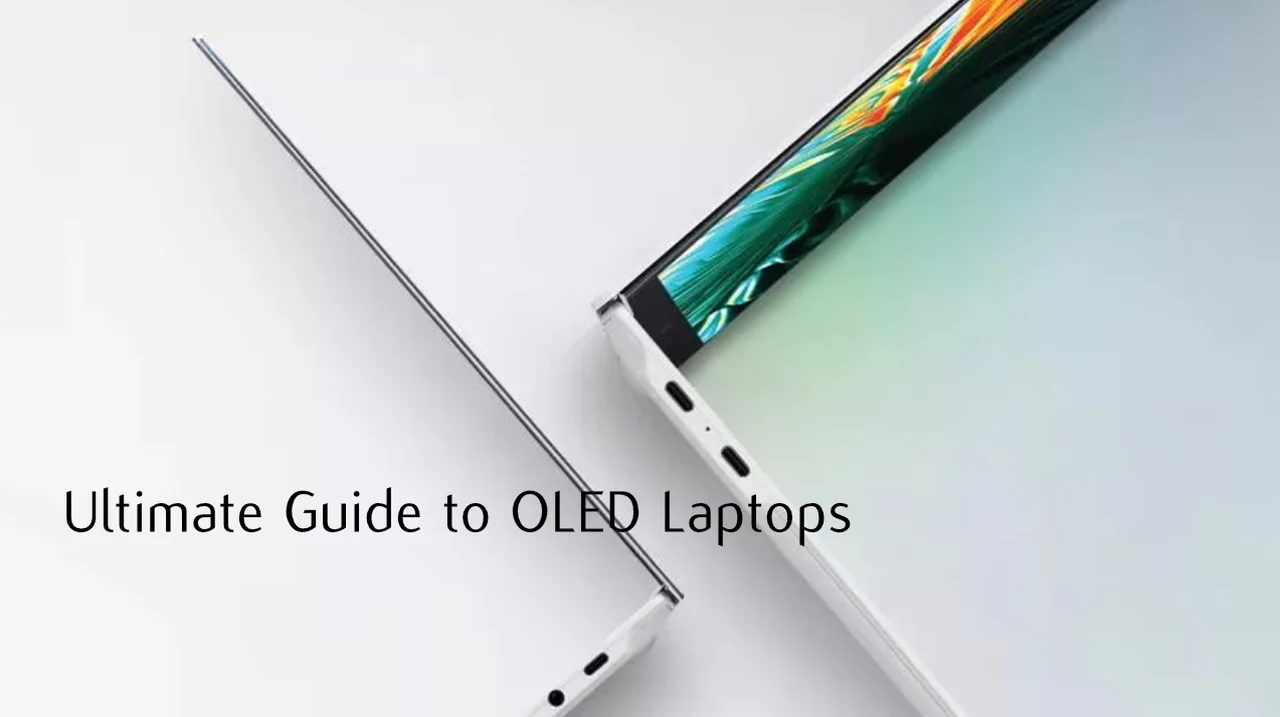When considering a new laptop, display quality often plays a crucial role in the decision-making process. One of the latest advancements in display technology is OLED (Organic Light Emitting Diode) screens, which are now making their way into laptops. This guide delves into the benefits and potential drawbacks of OLED laptops, helping you determine if they’re the right choice for you.
Pros vs Cons of OLED Laptops Quick Reference :
Pros:
- Superior Image Quality: OLED screens offer exceptional color accuracy, deep blacks, and high contrast ratios, making them ideal for media consumption, content creation, and gaming.
- Faster Response Times: The quick response times reduce motion blur, enhancing the viewing experience for fast-paced content.
- Wider Viewing Angles: OLED displays maintain color consistency and brightness from various angles, providing a better viewing experience in diverse environments.
- Thinner and Lighter Design: OLED panels contribute to slimmer and lighter laptop designs, improving portability.
Cons:
- Risk of Burn-In: Prolonged display of static images can lead to permanent screen burn-in, which is a significant concern for OLED technology.
- Higher Cost: OLED laptops generally come at a premium price due to the advanced display technology.
- Battery Life: OLED screens can consume more power when displaying bright images, potentially leading to shorter battery life.
- Potential Longevity Issues: Proper care is required to maintain OLED screen quality over time, including managing brightness and avoiding static content.
The Beauty of OLED Technology
OLED displays have garnered attention for their exceptional image quality. Unlike traditional LCDs, which rely on a backlight to illuminate pixels, OLED screens have self-emissive pixels. This means each pixel can independently emit light and color, leading to incredibly vibrant and accurate colors, deep blacks, and high contrast ratios. These characteristics make OLED displays particularly appealing for activities that demand high visual fidelity, such as photo editing, video production, and media consumption.
The superior contrast ratio of OLED screens enhances the viewing experience by delivering more lifelike images. When watching movies or playing games, the deeper blacks and brighter highlights contribute to a more immersive experience. Furthermore, OLED screens offer faster response times, which can reduce motion blur and provide a smoother visual experience, especially beneficial for gamers and video editors.
Considerations and Potential Drawbacks
However, it’s important to be aware of some potential downsides to OLED technology. One significant concern is screen burn-in, which occurs when static images are displayed for prolonged periods, leading to permanent ghosting on the screen. This can be particularly problematic for users who frequently use applications with static elements, like toolbars or status bars. To mitigate this risk, it’s advisable to use dynamic wallpapers, screen savers, and periodically change the positions of static elements on the screen.
Another consideration is the cost. OLED laptops are generally more expensive than their LCD counterparts. The advanced technology and production process required for OLED screens contribute to this price difference. However, for many users, the enhanced visual experience justifies the additional cost.
Battery life is another aspect where OLED laptops may differ from traditional LCD laptops. OLED screens can consume more power when displaying bright content, potentially leading to shorter battery life. However, they are more power-efficient when displaying darker images. Adjusting the screen brightness and using dark mode can help optimize battery performance.
Durability and Longevity
The lifespan of an OLED laptop can be comparable to other types of laptops if cared for properly. Managing screen brightness, avoiding static content, and taking preventive measures against burn-in can help extend the longevity of the OLED display. Regular cleaning with a soft, lint-free cloth slightly dampened with water or a screen cleaner designed for OLED screens can maintain the display’s quality and prevent damage.
Enhancing Your Visual Experience
For those who prioritize display quality, an OLED laptop can be a worthwhile investment. The enhanced color accuracy and contrast ratios significantly improve the user experience, making tasks like video editing, gaming, and media consumption more enjoyable. Additionally, OLED screens provide wider viewing angles, ensuring consistent image quality from various perspectives.
Is an OLED Laptop Right for You?
Ultimately, the decision to invest in an OLED laptop depends on your specific needs and priorities. If you are a creative professional who values color accuracy and image quality, or a gamer looking for the best visual experience, an OLED laptop could be an excellent choice. However, if you are concerned about potential burn-in or are on a tighter budget, you might want to weigh these factors carefully.
Future of OLED in Laptops
As technology advances, we can expect to see more OLED laptops with higher refresh rates, such as 120Hz and 144Hz screens, becoming available. These advancements will further enhance the gaming and video playback experience. Additionally, as production processes improve, the cost of OLED laptops may decrease, making this technology more accessible to a broader range of users.
Connecting and Using OLED Laptops
Connecting an OLED laptop to external devices, such as OLED TVs, can enhance your viewing experience. Using HDMI cables or wireless casting options like Miracast or Chromecast allows for seamless connectivity. Ensure that both devices support the chosen method and configure the display settings accordingly.
In conclusion, OLED laptops offer a remarkable visual experience that can greatly enhance various tasks. While they come with certain drawbacks, such as potential burn-in and higher costs, the benefits often outweigh these concerns for many users. By understanding the technology and taking preventive measures, you can enjoy the superior image quality and performance that OLED laptops provide. Learn more about OLED technology over on the Wikipedia website.
Filed Under: Laptops
Latest TechMehow Deals
Disclosure: Some of our articles include affiliate links. If you buy something through one of these links, TechMehow may earn an affiliate commission. Learn about our Disclosure Policy.
